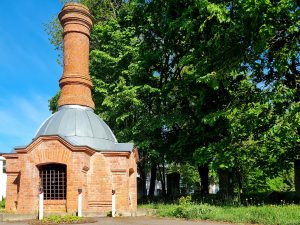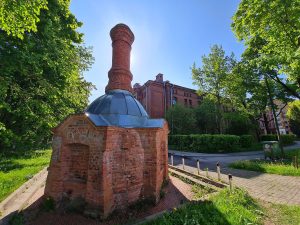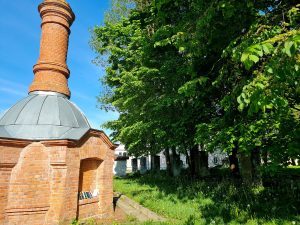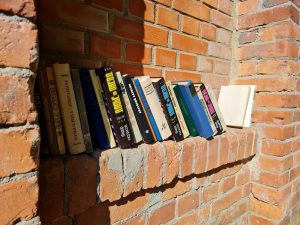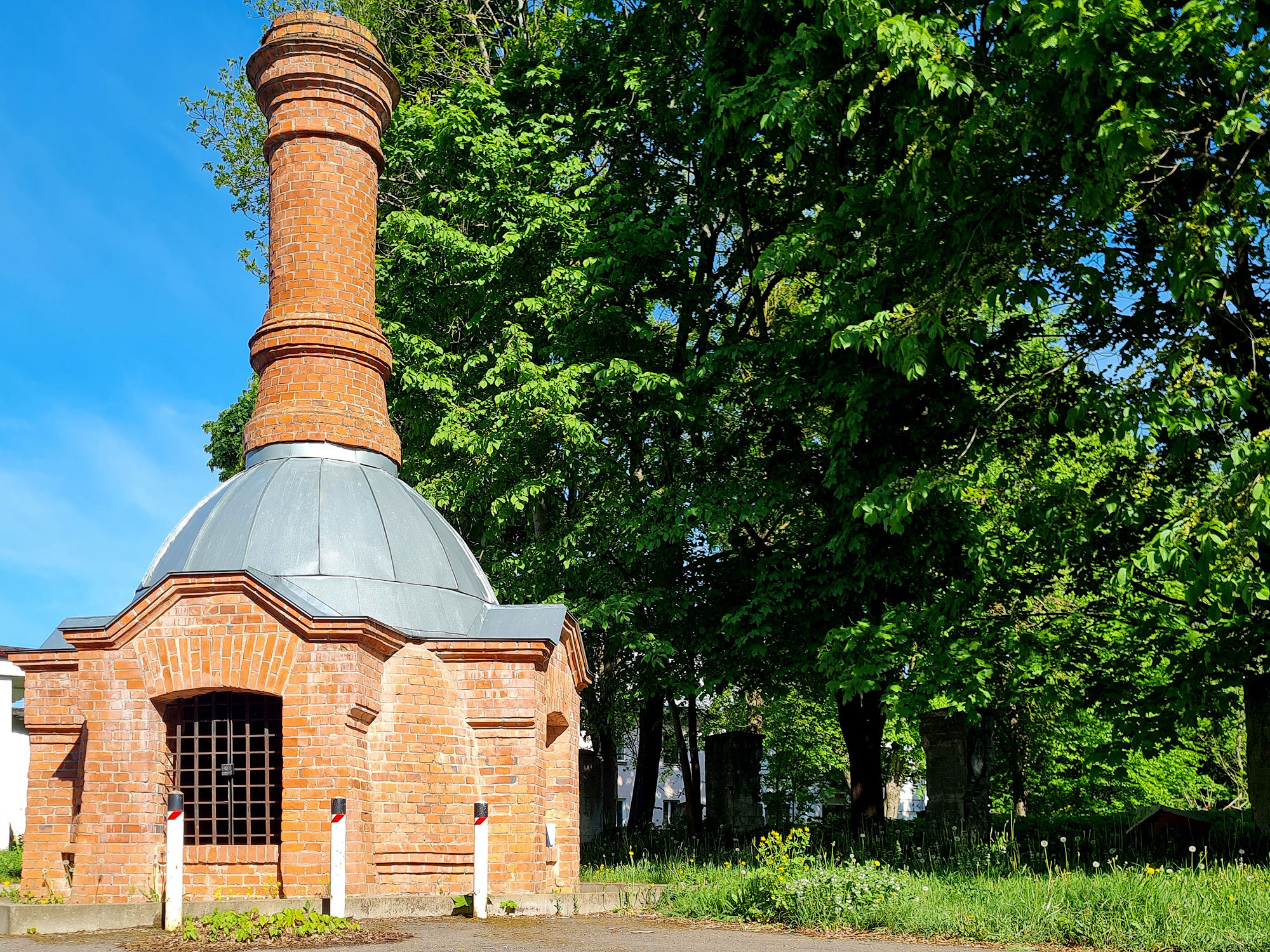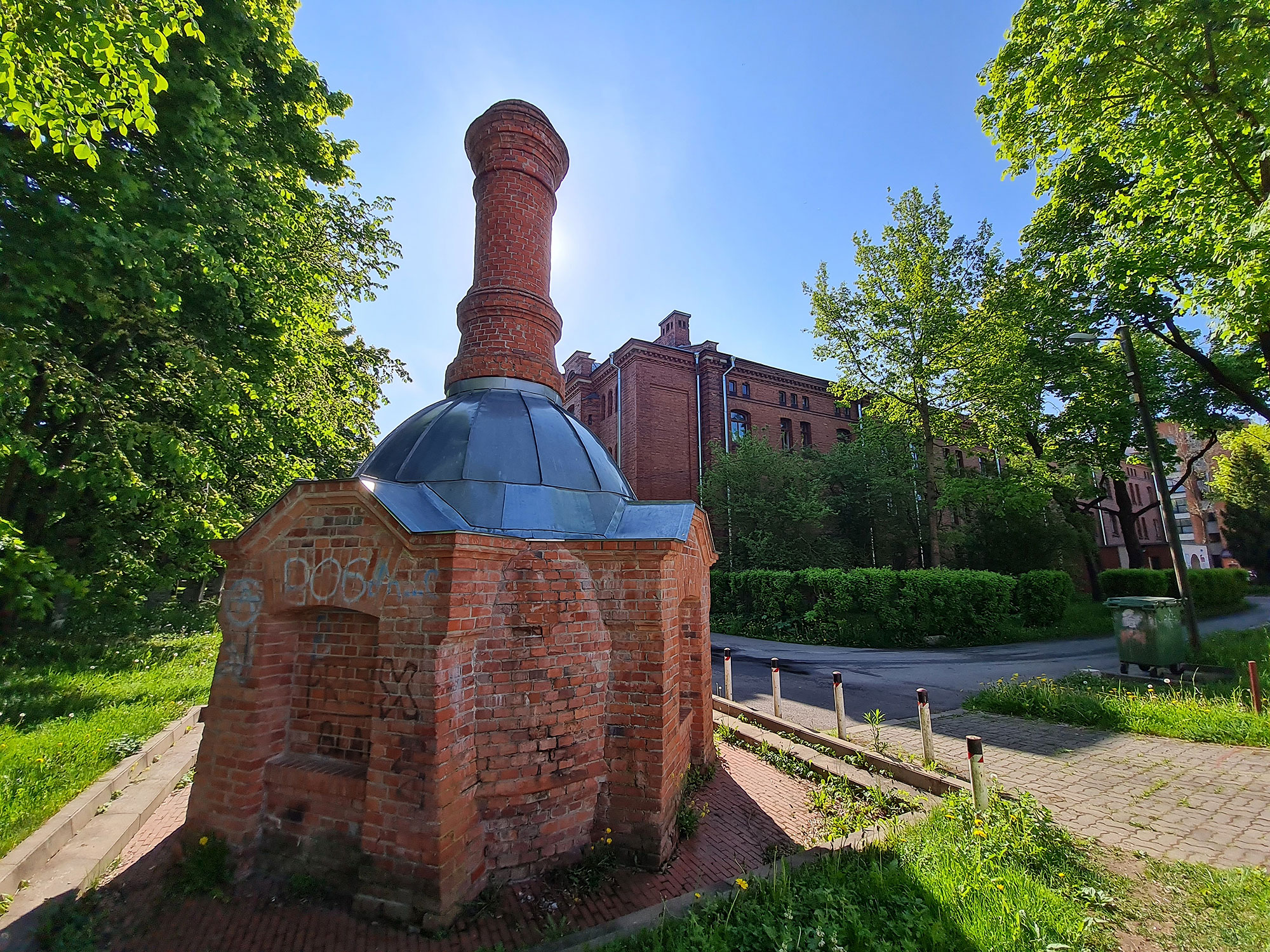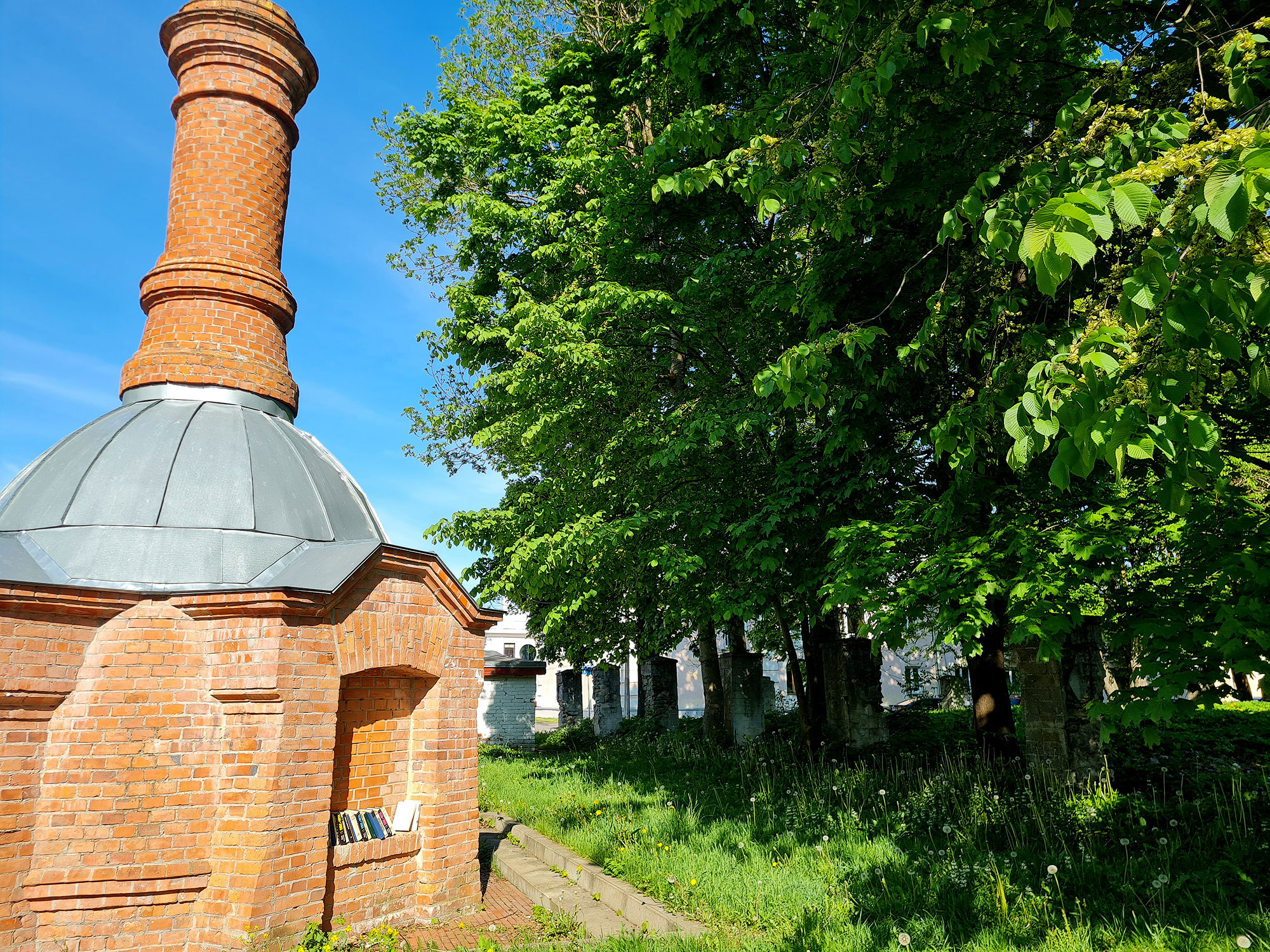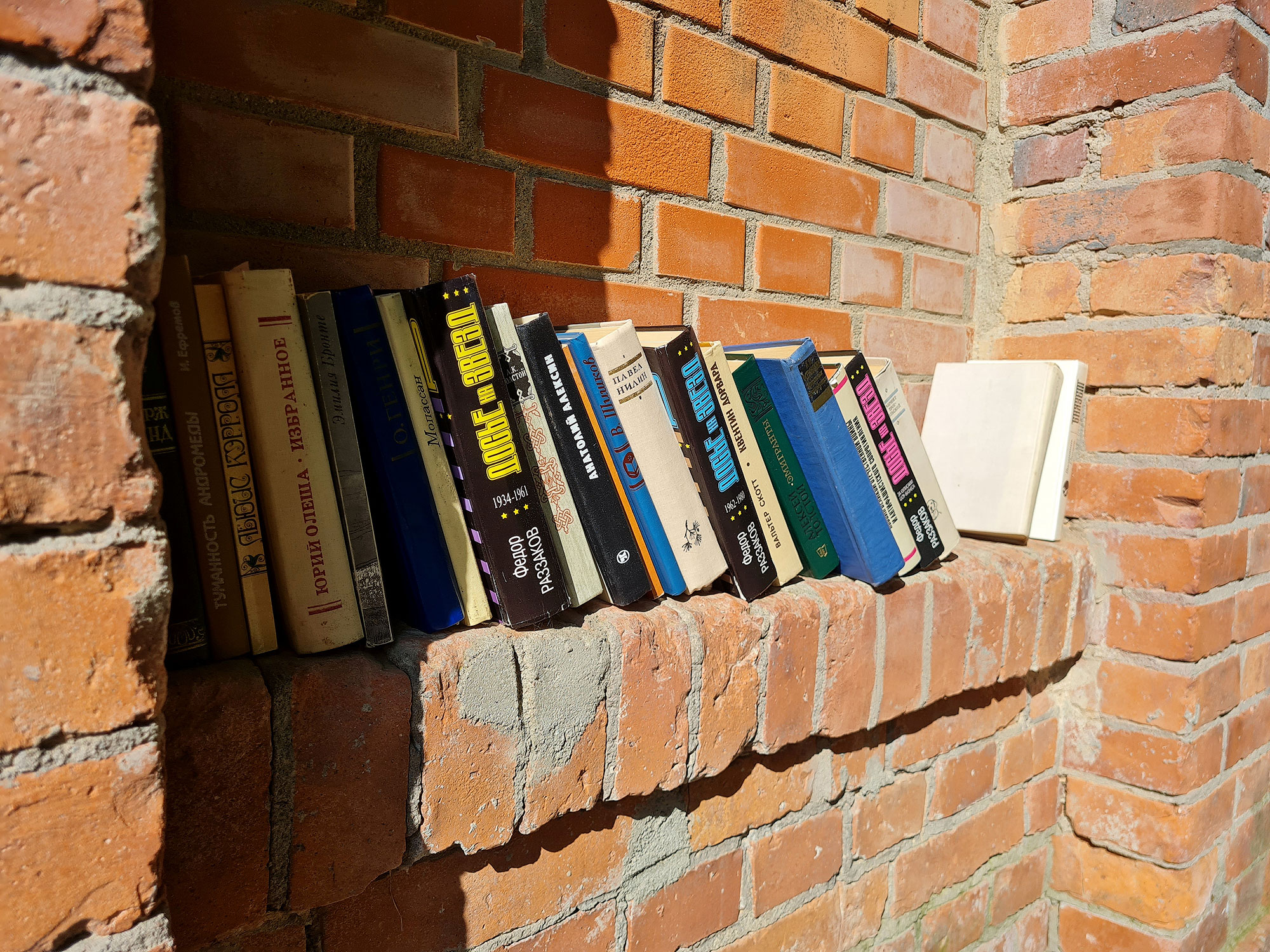The bottle-shaped building between the barracks triggers curiosity in both locals and city visitors, because what it is, is still not completely clear. The object is often called a garbage furnace, although there are no traces of burning. This construction was also thought to be a place for excrement or garbage collection. After the war, there were only five of these in Kreenholm, and garbage was probably collected in them as well.
However, it is most likely that initially this structure was used for washing laundry. The washing water was collected in a bottle-shaped brick construction with four openings to channel water into the sewer. Originally, the construction was equipped with a wooden platform with a gabled roof resting on poles. Utility buildings of this kind were connected to an underground drainage ditch that emptied into the river.
Why does such an explanation seem logical? The nearby barracks had rooms with a shared kitchen and a stove, and separate toilets for women and men. You could cook in the kitchen, and dry laundry in the attic, but there was nowhere to do the laundry, as 120 years ago up to 500 people lived in these barracks.
Silvia Ilmenskaja, an elderly Narva woman, recalls how she went to a red brick barracks with her grandmother in the early 1950s: “I was a little girl, I didn’t even go to school yet. My grandma wanted to visit a friend. We went to the second floor and found ourselves in a long and relatively wide corridor with room doors on both sides. Even though it was daytime, it was very dark in the corridor, because there were no windows and there were a few electric lamps burning on the ceiling, which gave off little light, and the whole corridor was full of steam. In this long corridor, there were two or three very large wood-burning stoves and women were fussing around them, talking loudly. Someone was cooking sauerkraut soup, someone was boiling and doing laundry there too, someone else was frying fish and so on. An old man was cleaning and polishing boots, another one was repairing shoes, others were drinking beer from a bottle and arguing. There were toilets at both ends of the corridor, and the stench spread from there. Several cats were walking in the corridor. The smells of sauerkraut soup, dirty laundry, fried fish, cats, shoe polish and the stench from the toilets mixed in this corridor-kitchen and people’s faces were peeping through the steam. I was very scared to be there. Grandma’s acquaintance was not at home and we left. At home, I told my mother that my grandmother and I went to a witches’ house, where everything steamed and smelled, and I was afraid that a witch would come after me.”
